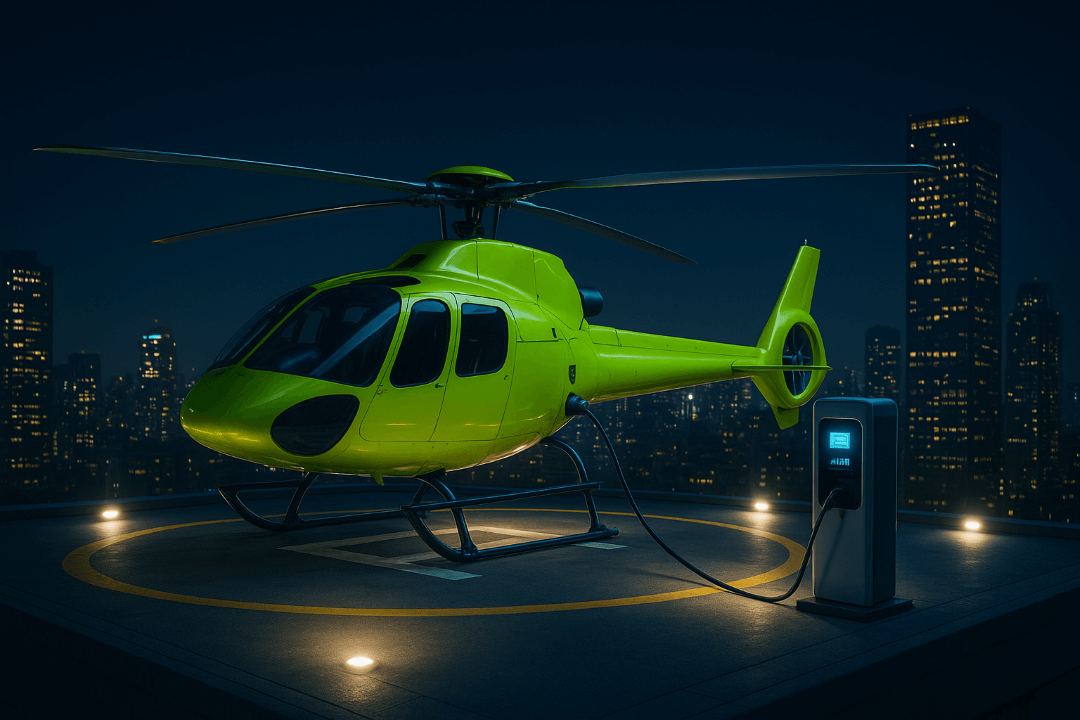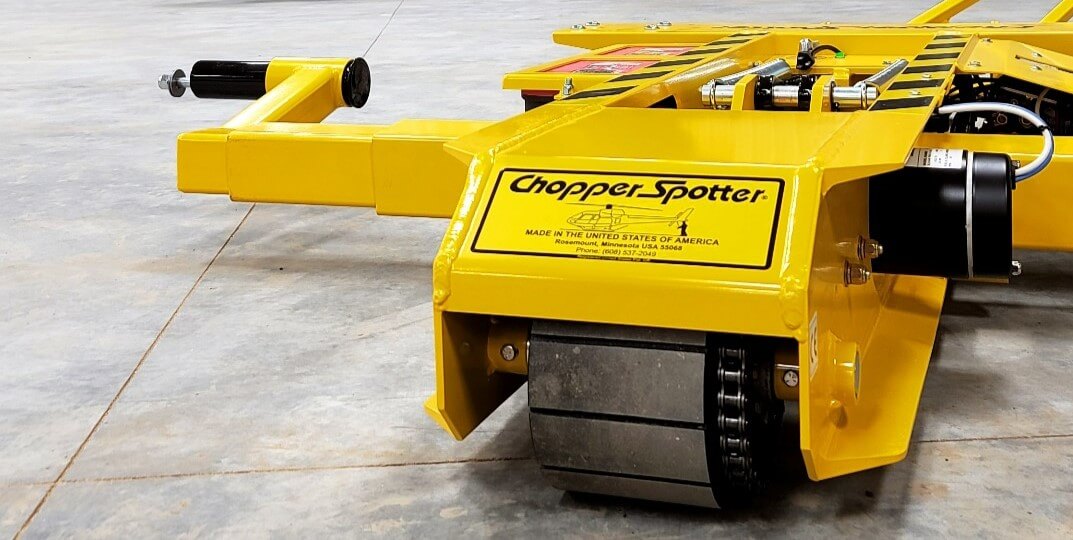Electric Helicopters: How Close Are We to a Battery-Powered Future?

The aviation industry is standing on the brink of an electric revolution—and helicopters are no exception. As manufacturers race to reduce emissions, cut fuel costs, and embrace greener technologies, electric helicopters have emerged as one of the most talked-about innovations in the rotorcraft world.
But the question remains: Are electric helicopters possible—and if so, how close are we to seeing them take flight on a large scale?
The answer is both exciting and complex. While engineers are making incredible progress in propulsion and battery design, a fully electric, commercially viable helicopter still faces several major hurdles. Yet the progress being made points to a future that’s cleaner, quieter, and—eventually—completely electric.
4 Benefits of Electric Helicopters
The move toward battery-powered helicopters is part of a broader trend across aviation. From air taxis and drones to fixed-wing aircraft, electrification is transforming how we think about flight.
For helicopters, the potential benefits are clear:
- Zero emissions: Electric propulsion produces no direct CO₂ output, supporting global sustainability goals.
- Lower operating costs: Electricity costs less than jet fuel, and electric motors require far less maintenance than combustion engines.
- Reduced noise: Electric rotors are significantly quieter—an enormous advantage for urban operations and medevac missions near populated areas.
- Simplified mechanics: Fewer moving parts mean improved reliability and fewer maintenance-related downtimes.
If these benefits sound familiar, it’s because we’re seeing them play out across the automotive industry. Much like electric cars, hybrid electric aircraft are serving as the bridge between today’s fuel-powered models and tomorrow’s all-electric fleets.
Electric Helicopter Milestones
You might be surprised to learn that electric helicopters are no longer just a prototype (like these other exciting helicopter concepts). In fact, a handful of models have already taken flight!
In 2011, Sikorsky Innovations introduced the Firefly, the world’s first all-electric helicopter demonstrator. It used a lightweight Schweizer 300C airframe and a 190-horsepower electric motor. The concept was proof that electric vertical flight was technically feasible, but the flight duration—around 15 minutes—exposed a significant challenge: energy density.
Unfortunately, battery technology at the time simply couldn’t provide the same power-to-weight ratio as jet fuel. However, the last decade has seen exponential advances in lithium-ion efficiency and, more recently, solid-state battery research.
In 2023, companies like Tier 1 Engineering and MagniX demonstrated new electric conversions of popular light helicopters like the Robinson R44, achieving flight times exceeding 20 minutes with promising recharge rates. These aren’t just prototypes—they’re testbeds paving the way for a scalable electric aviation ecosystem.
The Power Problem: Batteries vs. Fuel
Despite the progress, the core limitation remains energy density. Jet A fuel stores roughly 43 times more energy per kilogram than current lithium-ion batteries. For helicopters—which require enormous power just to hover—that’s a major problem.
To achieve the same range and endurance as a conventional turbine helicopter, an electric version would need a battery so heavy it would compromise lift and payload capacity.
That’s where hybrid electric aircraft come in. These models combine battery systems with small combustion engines or turbine generators to extend range and reduce emissions. It’s certainly not the end goal, but it’s a practical step forward—and a potential game-changer for mission-critical operations like medical transport, law enforcement, and offshore support.
Hybrid systems can dramatically cut fuel consumption and maintenance costs, while still offering the reliability and performance needed for demanding missions.
eVTOL vs Electric Helicopters for Urban Air Mobility
One of the most promising applications for electric helicopters isn’t in traditional aviation—it’s in urban air mobility (UAM). Companies like Joby Aviation, Vertical Aerospace, and Volocopter are developing eVTOL (electric vertical takeoff and landing) aircraft that promise to revolutionize short-distance air travel.
These aircraft, while not helicopters in the classic sense, share many design similarities—rotors, vertical lift, compact frames—and are powered entirely by electric propulsion. Their goal: to provide efficient, zero-emission transport across cities.
While most are still in testing phases, the groundwork being laid by these companies is accelerating battery, motor, and charging technology for the helicopter industry and beyond. As electric propulsion becomes more efficient, traditional helicopters will benefit from the same advancements.
Sustainability Takes Flight
The push for battery-powered helicopters aligns with a larger commitment to sustainable aviation. Alongside electrification, other eco-friendly initiatives—like Sustainable Aviation Fuel (SAF)—are playing a critical role in reducing aviation’s environmental impact.
For operators who can’t yet make the jump to electric, SAF offers a lower-emission alternative that works with existing engines and infrastructure. Electric flight may still be years away from large-scale adoption, but every improvement in fuel efficiency, hybrid design, and battery performance brings us one rotor closer to that reality.
What’s Next for Electric Helicopters?
So, are electric helicopters possible? Absolutely. But are they ready to replace fuel-powered models entirely? Not quite yet.
Experts predict that within the next decade, short-range electric helicopters and hybrid models will enter limited personal and commercial use—particularly for training, tourism, and urban mobility. As battery technology improves, we’ll likely see broader adoption across medevac, law enforcement, and even military applications.
The dream of all-electric flight isn’t just science fiction anymore—it’s within reach. While the challenges are real, so is the momentum. From hybrid systems to urban air mobility, the electric helicopter revolution is well underway, and the path forward is clear: smaller, lighter, and more sustainable.
Ground Support for Electric and Hybrid Helicopters
When the day comes that battery-powered rotorcraft dominate the skies, Chopper Spotter will be ready on the ground—helping pilots, engineers, and aviation professionals handle the next generation of helicopters with the same care and confidence they’ve come to expect.
In an electric future, hangar space, charging access, and battery management will become critical factors in flight readiness. A smarter, more flexible ground-handling solution will help operators maximize uptime and minimize risk—no matter what’s powering their rotorcraft.
Our line of helicopter ground-handling systems is fully electric and engineered with precision and modularity in mind—built to support a variety of airframes, power systems, and mission environments.

At Chopper Spotter, we’re proud to support the innovators who are redefining what’s possible in the sky. As helicopters evolve from fuel to battery power, we’ll continue evolving too—because the future of flight isn’t just about what’s in the air; it’s about what supports it on the ground.